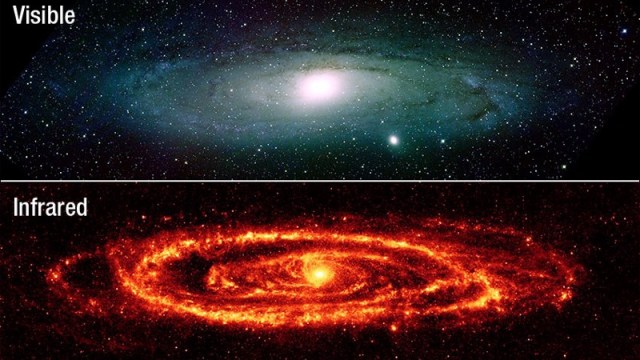What is the Universe expanding into?
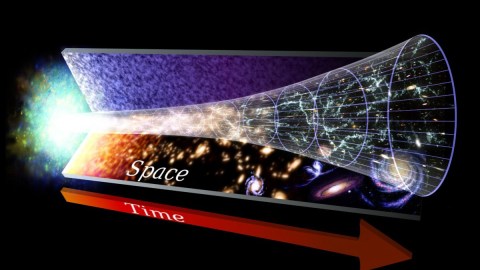
It’s getting bigger over time, but is there anything it’s displacing, or expanding into?
“Mathematicians deal with possible worlds, with an infinite number of logically consistent systems. Observers explore the one particular world we inhabit. Between the two stands the theorist. He studies possible worlds but only those which are compatible with the information furnished by observers. In other words, theory attempts to segregate the minimum number of possible worlds which must include the actual world we inhabit.” -Edwin Hubble
One of the most spectacular discoveries of the 20th century was that the Universe itself was expanding. When Einstein put forth his general theory of relativity, he swiftly recognized that there was a consequence he was unhappy about: a Universe that was filled with matter in all directions would be unstable against gravitational collapse. Einstein’s fix for this was to make up an invisible, outward-pushing force that prevented this collapse from occurring, a cosmological constant. But if you didn’t include this cosmological constant, others soon realized, you’d wind up with a Universe that wasn’t static in time, but where the fabric of space itself was either expanding or contracting with time.
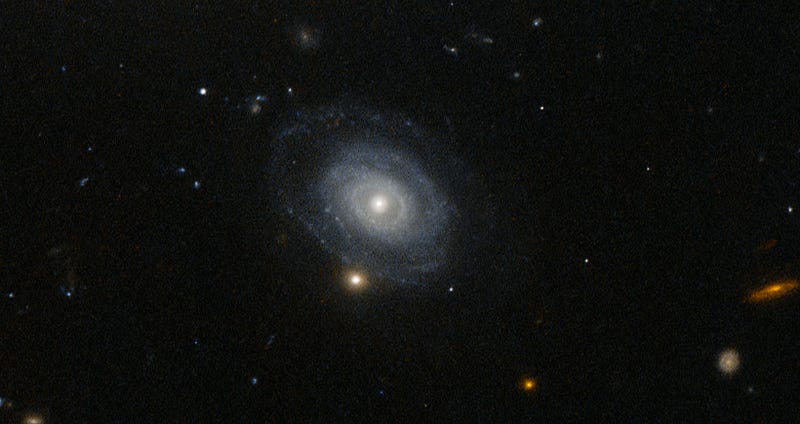
In the 1910s, Vesto Slipher noticed that the spiral nebulae in the sky were redshifted, consistent with the interpretation that they were moving away from us. In the 1920s, Hubble discovered that these nebulae were in fact galaxies, and determined their distance from us. If you combined these two facts — that there were distant galaxies that rapidly moved away from us — you noticed an interesting trend: the farther away a galaxy was from us, the faster it appeared to be moving away!
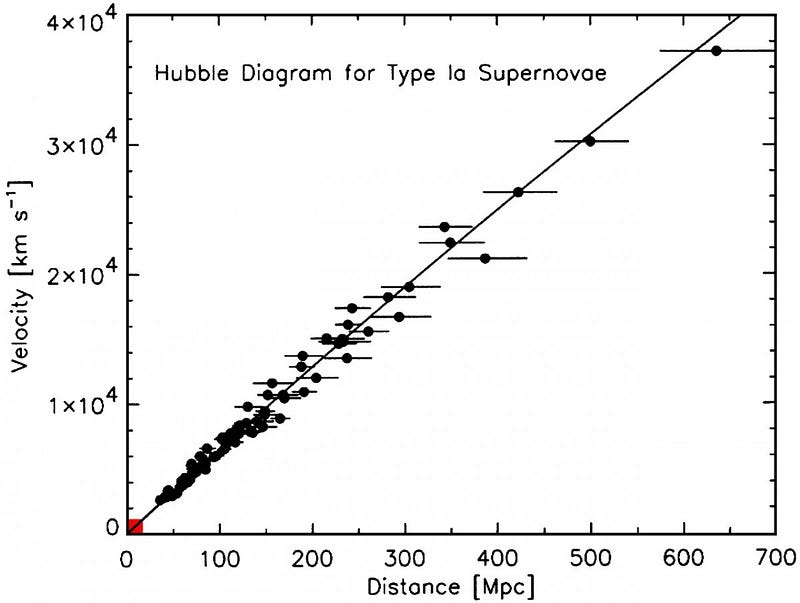
While this could have been due to a number of factors, including:
- The light from these distant galaxies getting “tired” and losing energy as they travel through space,
- A rapid motion, where the faster-moving galaxies wind up farther away over time,
- An initial explosion, which pushes some galaxies farther away from us by the present,
- Or the fabric of space itself expanding,
only the last option was validated by the full suite of data supporting both the general theory of relativity and the astrophysical distribution and properties of all the galaxies observed. It became apparent very quickly — as early as the 1930s — that there are no two ways about it: the Universe is, in fact, expanding.
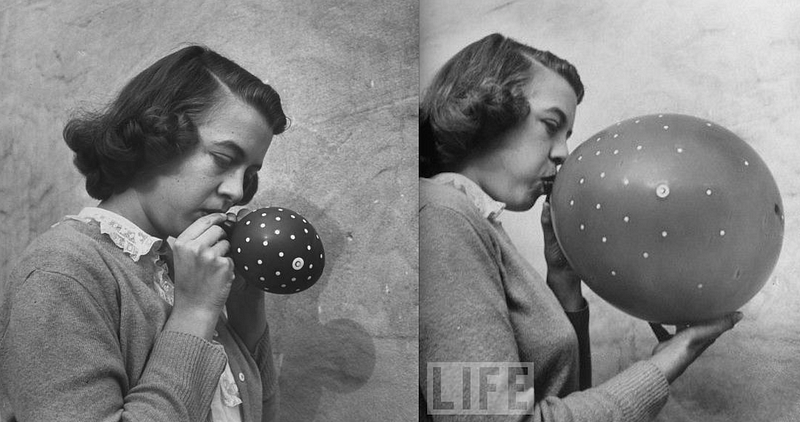
“But if it’s expanding,” almost everyone asks upon first learning about this, “then what is it expanding into?” We’re used to this concept in almost all of our experience, as an expanding balloon expands due to the air inside of it increasing, and to the balloon itself pushing out against the molecules on the outside. But think about this for a moment: do you really need the air for the balloon itself to expand? Couldn’t you, for example, simply take the stretchy fabric of the balloon — perhaps with two hands, perhaps with four hands (with a friend, or by yourself if you’re a mutant) — and pull it in multiple directions at once? And wouldn’t the fabric of the balloon then expand all the same? There are many, many reasons that cause something to stretch or expand.
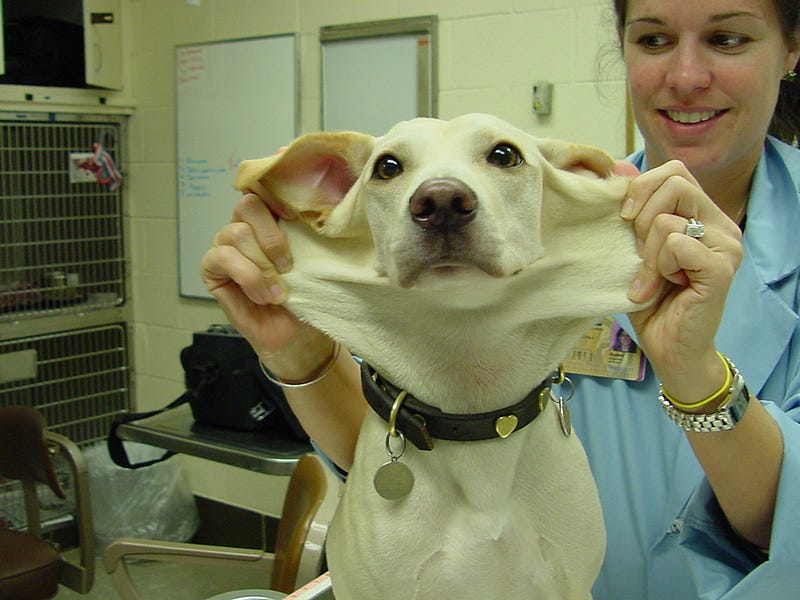
Now, imagine that you can only live on and see a tiny, tiny region of this balloon: one that’s just perhaps a millimeter (or about a thirtieth of an inch) in diameter. If you look at any other region of the balloon that you can see, you can tell it’s expanding, as the things within it will be moving away from you. Not only that, but the farther away something is, the faster it will appear to be moving away from you, just like the relationship that Edwin Hubble (and all the astronomers who came after him) saw and still see today.
But what’s causing the expansion? Is it because the two-dimensional surface of the balloon is being stretched by some outside, unseen force? Is it because the two-dimensional surface actually lives in a higher-dimensional (like a 3D) space, and there’s something blowing it up? Is there something inherent to the balloon itself, that causes it to expand of its own volition? Or was there an initial set of conditions that the fabric of the balloon started off with that determined these expansion properties before anyone ever came along to observe it?
The complete and honest answer is we don’t know, and moreover, we can’t know! From our vantage point, we can only see that the balloon is expanding. We can assume (it would be illogical not to) that there’s more balloon out there beyond what we can see; we can track exactly how the balloon is expanding today and how it’s been expanding throughout the Universe’s history; we can measure the properties of everything observable to us and study how it affect and is affected by the balloon, and so much more. But as far as what lies beyond the part of the balloon we can observe, including in dimensions beyond the two that make up the surface of the balloon, we simply don’t have the information to say.
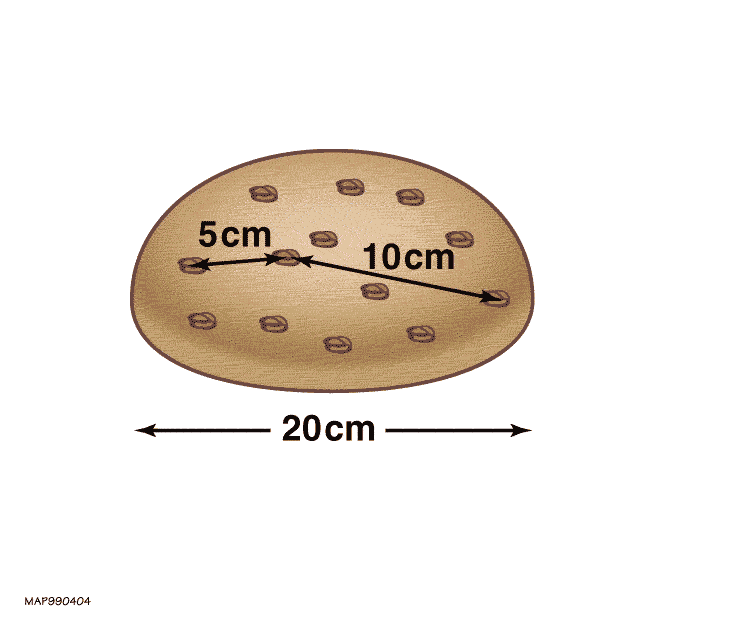
Our Universe is like a three dimensional version of the balloon’s surface, where galaxies are like raisins baking in a gigantic loaf of bread. (The bread is the invisible fabric of space; the galaxies are the raisins within.) We can measure the raisins within our view — where “our view” is determined by the speed of light and the amount of time that’s passed since the Big Bang — and we assume that there’s more raisins and more bread outside of what we can see, but that’s all we can know. We can determine the past expansion history of our Universe, we can find that the expansion is accelerating rather than any of the other options (and hence, describe the expansion), but as far as what’s happening outside of what we can observe, we have more questions than answers.
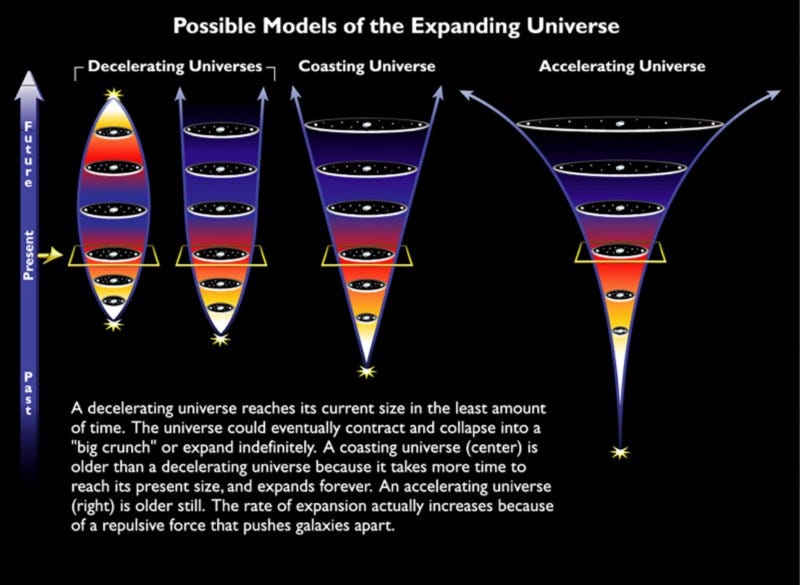
Are there four (or more) spatial dimensions, total? Is there truly a center to this loaf of bread (or to our Universe)? Is it infinite, or simply bigger than we can perceive? Does it ever curve back in on itself and reconnect? And is there something bigger and grander than what we can ever hope to observe, that it truly is expanding into? We not only don’t know, we have no idea how it would ever be possible to know. But that’s part of the wonder and joy of science: until we know, we have to admit that even the most absurd-sounding explanation that can’t be ruled out is actually possible. The Universe doesn’t need to be expanding into anything greater than itself; it may simply be expanding, because that’s what space does in general relativity. But it could be doing much, much more. If we’re lucky, perhaps someday we’ll devise a way to find out.
This post first appeared at Forbes. Leave your comments on our forum, check out our first book: Beyond The Galaxy, and support our Patreon campaign!





